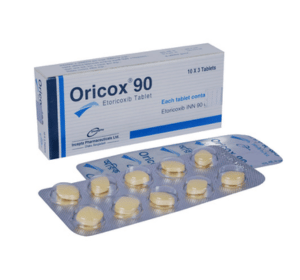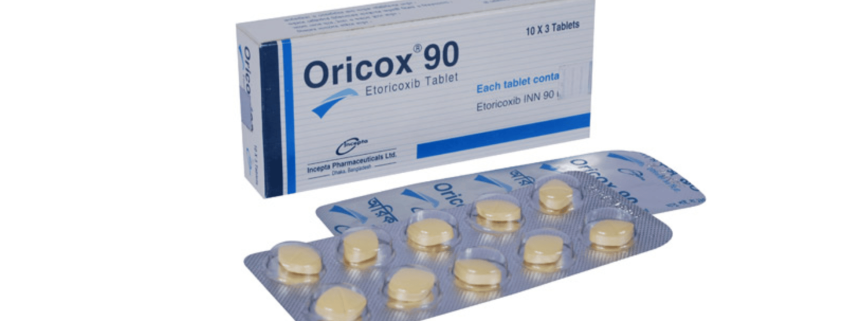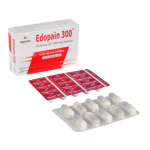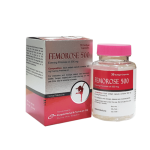Oricox(Etoricoxib)
Therapeutic Group: Analgesic, Anti Inflammatory

Presentation
Oricox 60: Each tablet contains Etoricoxib INN 60 mg.
Oricox 90: Each tablet contains Etoricoxib INN 90 mg.
Oricox 120: Each tablet contains Etoricoxib INN 120 mg.
Description
Oricox is the preparation of Etoricoxib. It is a nonsteroidal anti-inflammatory drug (NSAID) that exhibits anti-inflammatory, analgesic, and antipyretic activities in animal models. It is a potent, orally active, highly selective cyclooxygenase-2 (COX-2) inhibitor within and above the clinical dose range. COX-2 has been shown to be primarily responsible for the synthesis of prostanoid mediators of pain, inflammation, and fever. Selective inhibition of COX-2 by Etoricoxib decreases these clinical signs and symptoms with decreased GI toxicity and without effects on platelet function
Indications
• Pain and inflammation in osteoarthritis, rheumatoid arthritis and other chronic musculoskeletal disorders
• Acute gout
• Pain of dysmenorrhoea and
• Pain following dental surgery.
Dosage & Administration
Adult and adolescent over 16 years:
In case of osteoarthritis, dysmenorrhoea, chronic musculoskeletal disorders, 60 mg once daily.
In case of rheumatoid arthritis 90 mg once daily.
In case of pain following dental surgery, acute gout 120 mg once daily.
Safety and effectiveness of Etoricoxib in paediatric patients have not been established.
Side Effects
Side-effects may include dry mouth, taste disturbance, mouth ulcers, flatulence, constipation, appetite and weight changes, chest pain, fatigue, paraesthesia, influenza-like syndrome, myalgia.
Precautions
In patients with advanced renal disease, treatment with it is not recommended. Clinical experience in patients with estimated creatinine clearance of <30 ml/min is very limited. If therapy with it must be initiated in such patients, close monitoring of the patient’s renal function is advisable. Caution should be used when initiating treatment with it in patients with considerable dehydration. It is advisable to rehydrate patients prior to starting therapy with it. The possibility of fluid retention, oedema or hypertension should be taken into consideration when it is used in patients with pre-existing oedema, hypertension, or heart failure. Independent of treatment, patients with a prior history of GI perforation, ulcers and bleeding (PUB) and patients greater than 65 years of age are known to be at a higher risk for a PUB. A patient with symptoms and/or signs suggesting liver dysfunction, or in whom an abnormal liver function test has occurred, should be evaluated for persistently abnormal liver function tests. If persistently abnormal liver function tests (three times the upper limit of normal) are detected, it should be discontinued. It should be used with caution in patients who have previously experienced acute asthmatic attacks, urticaria or rhinitis, which were precipitated by salicylates or non-selective cyclooxygenase inhibitors. It may mask fever, which is a sign of infection. The physician should be aware of this when using it in patients being treated for infection.
Use in Pregnancy & Lactation
Pregnancy: As with other drugs known to inhibit prostaglandin synthesis, use of it should be avoided in late pregnancy because it may cause premature closure of the ductus arteriosus. It should be used during the first two trimesters of pregnancy only if the potential benefit justifies the potential risk to the foetus.
Lactation: It is not known whether this drug is excreted in human milk.
Commercial Pack
Oricox 60: Each box contains 3 blister strips of 10 Tablets.
Oricox 90: Each box contains 3 blister strips of 10 Tablets.
Oricox 120: Each box contains 2 blister strips of 10 Tablets.



